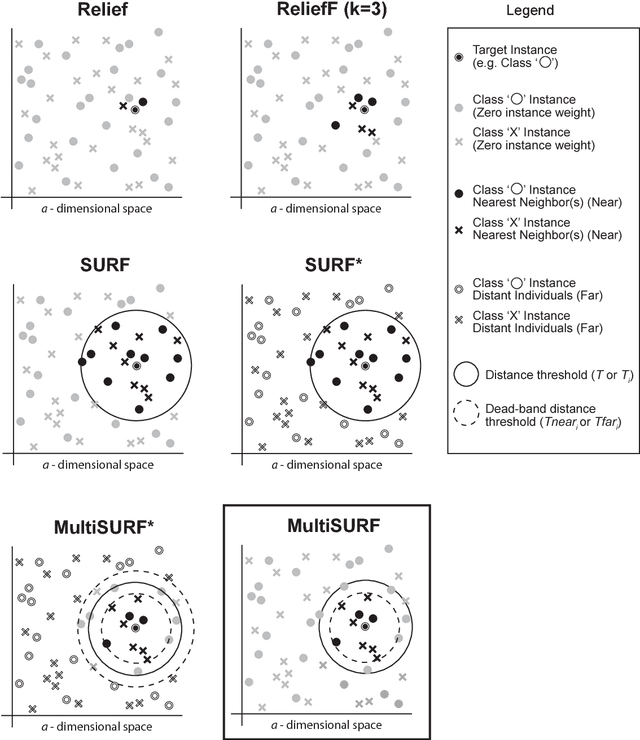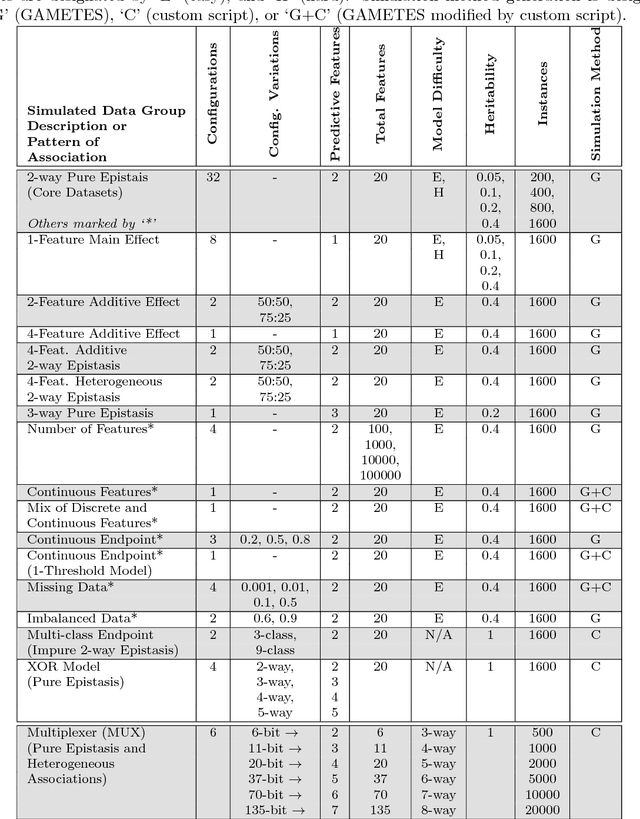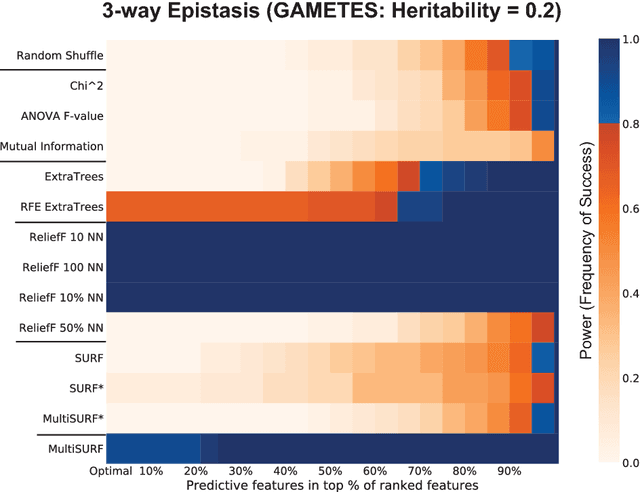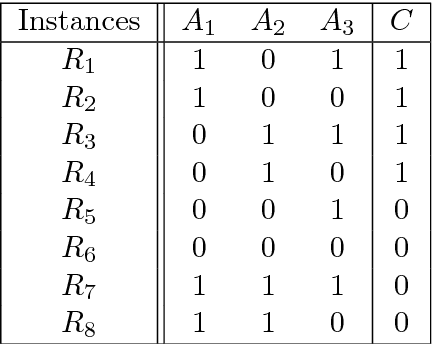Melissa Meeker
Benchmarking Relief-Based Feature Selection Methods for Bioinformatics Data Mining
Apr 03, 2018



Abstract:Modern biomedical data mining requires feature selection methods that can (1) be applied to large scale feature spaces (e.g. `omics' data), (2) function in noisy problems, (3) detect complex patterns of association (e.g. gene-gene interactions), (4) be flexibly adapted to various problem domains and data types (e.g. genetic variants, gene expression, and clinical data) and (5) are computationally tractable. To that end, this work examines a set of filter-style feature selection algorithms inspired by the `Relief' algorithm, i.e. Relief-Based algorithms (RBAs). We implement and expand these RBAs in an open source framework called ReBATE (Relief-Based Algorithm Training Environment). We apply a comprehensive genetic simulation study comparing existing RBAs, a proposed RBA called MultiSURF, and other established feature selection methods, over a variety of problems. The results of this study (1) support the assertion that RBAs are particularly flexible, efficient, and powerful feature selection methods that differentiate relevant features having univariate, multivariate, epistatic, or heterogeneous associations, (2) confirm the efficacy of expansions for classification vs. regression, discrete vs. continuous features, missing data, multiple classes, or class imbalance, (3) identify previously unknown limitations of specific RBAs, and (4) suggest that while MultiSURF* performs best for explicitly identifying pure 2-way interactions, MultiSURF yields the most reliable feature selection performance across a wide range of problem types.
Relief-Based Feature Selection: Introduction and Review
Apr 02, 2018



Abstract:Feature selection plays a critical role in biomedical data mining, driven by increasing feature dimensionality in target problems and growing interest in advanced but computationally expensive methodologies able to model complex associations. Specifically, there is a need for feature selection methods that are computationally efficient, yet sensitive to complex patterns of association, e.g. interactions, so that informative features are not mistakenly eliminated prior to downstream modeling. This paper focuses on Relief-based algorithms (RBAs), a unique family of filter-style feature selection algorithms that have gained appeal by striking an effective balance between these objectives while flexibly adapting to various data characteristics, e.g. classification vs. regression. First, this work broadly examines types of feature selection and defines RBAs within that context. Next, we introduce the original Relief algorithm and associated concepts, emphasizing the intuition behind how it works, how feature weights generated by the algorithm can be interpreted, and why it is sensitive to feature interactions without evaluating combinations of features. Lastly, we include an expansive review of RBA methodological research beyond Relief and its popular descendant, ReliefF. In particular, we characterize branches of RBA research, and provide comparative summaries of RBA algorithms including contributions, strategies, functionality, time complexity, adaptation to key data characteristics, and software availability.
 Add to Chrome
Add to Chrome Add to Firefox
Add to Firefox Add to Edge
Add to Edge